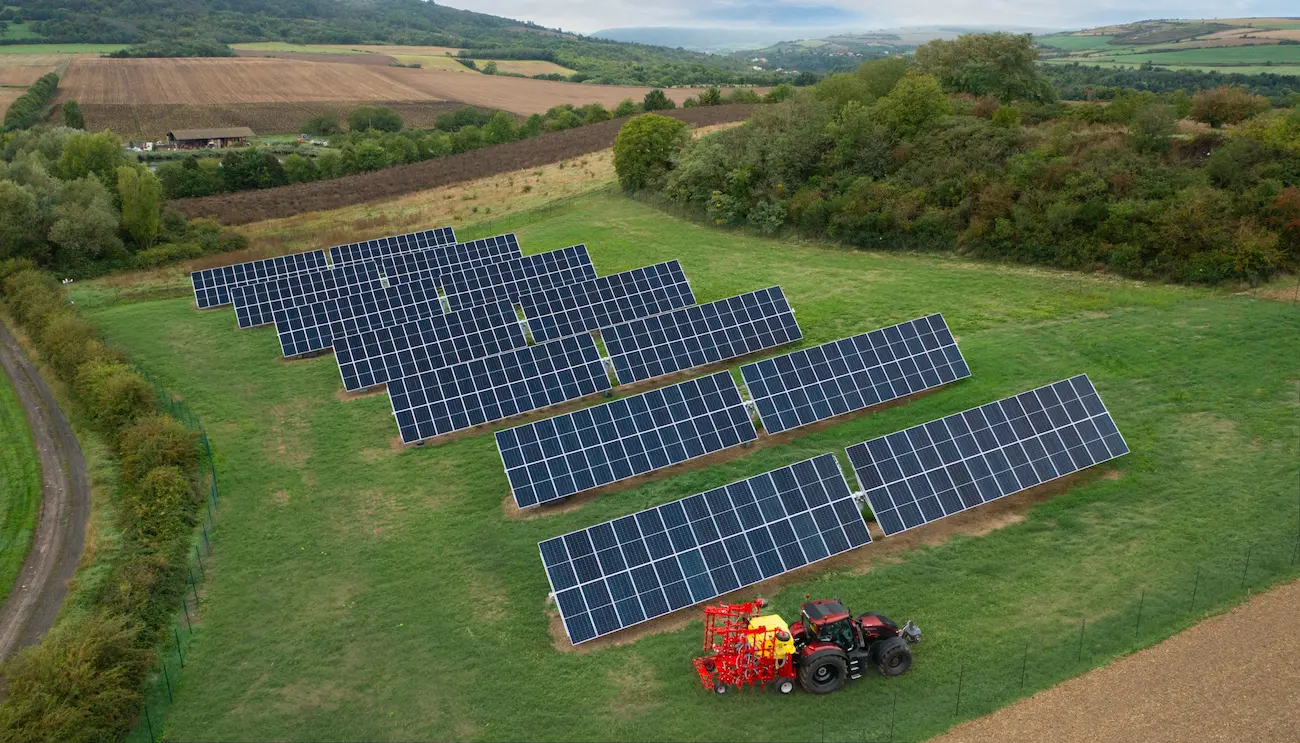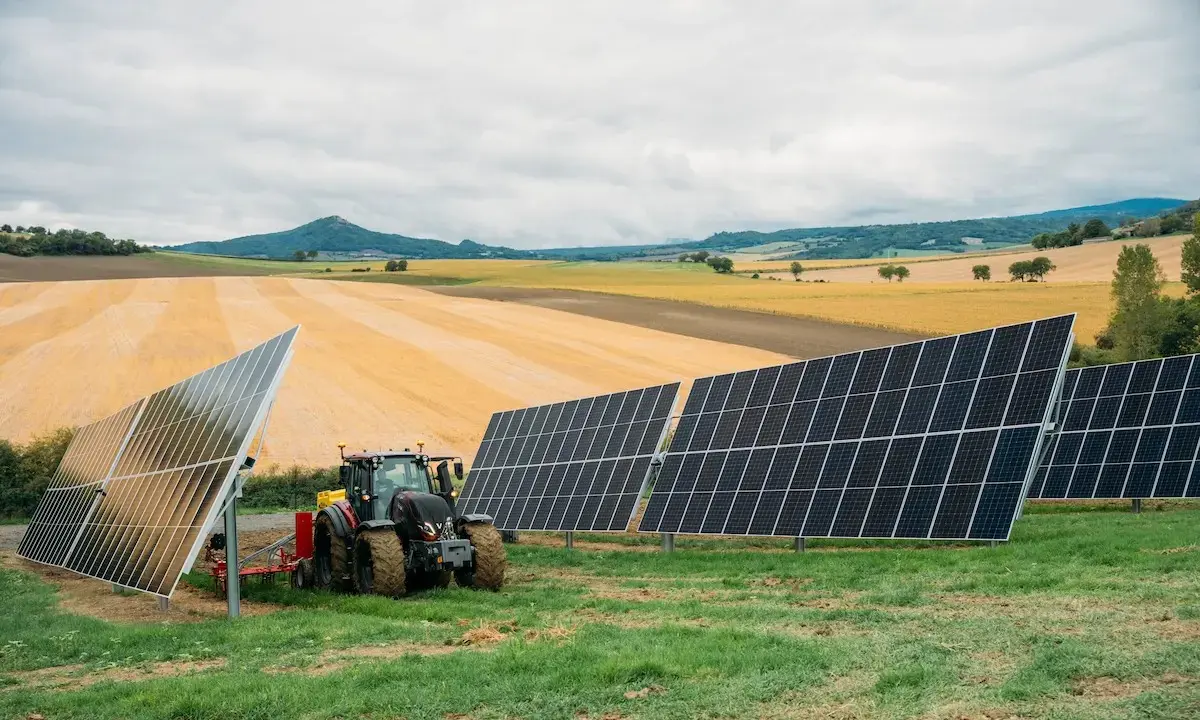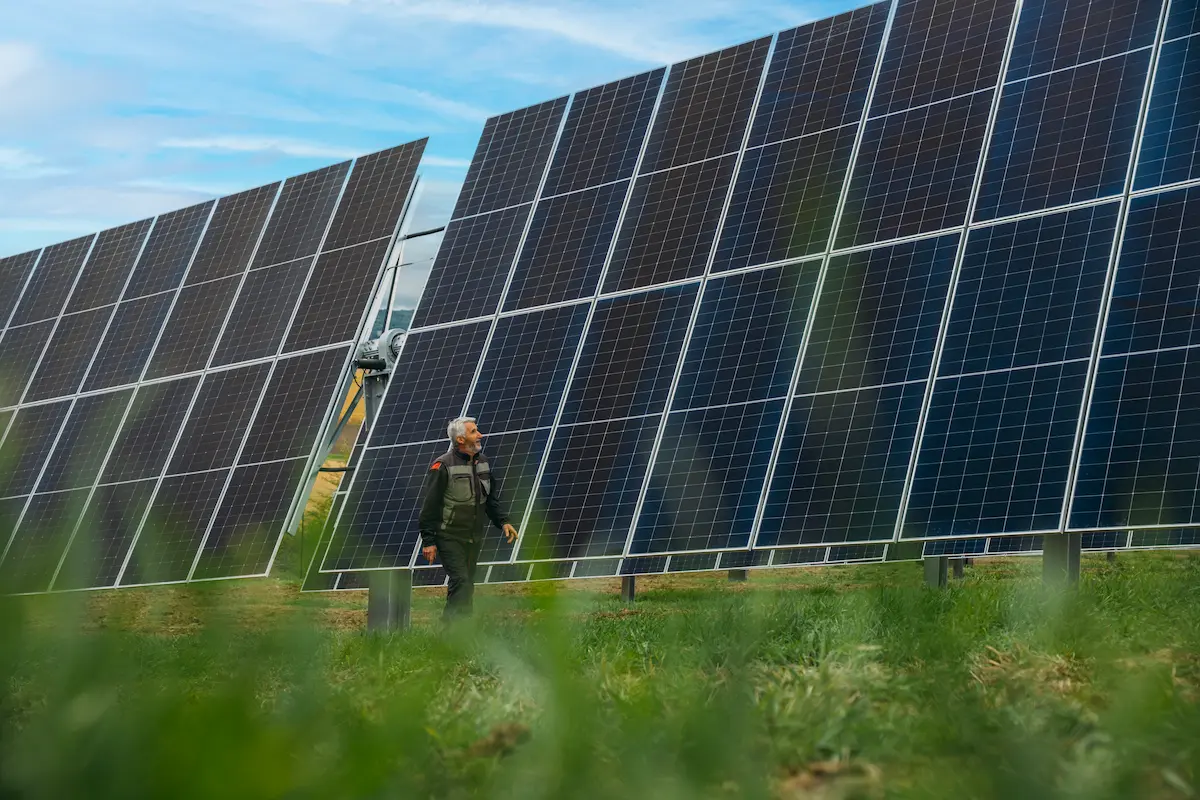Our agrivoltaic solutions

Our vision of agrivoltaics
At TSE, we are determined to reconcile sustainable agriculture, green energy, the restoration of biodiversity and the preservation of water resources.
The agrivoltaic solutions that we develop hand in hand with the agricultural world, produce the best solar energy for the best of crops. All our solutions are equipped with rotating solar panels that generate partial and rotating shade that is beneficial to crops and livestock.
We have launched an ambitious program comprising several pilot sites, which are testing a large number of plant species and varieties as well as different types of livestock farming throughout France.

The agronomics benefits of partial and rotating shading
- Solution adapted to all field crops
- Structure compatible with agricultural machinery: 5 meters high, 27 meters wide
- Optimized crop protection against climatic hazards
Agricultural canopy

- Solution adapted to field crops
- Flexible layout according to the terrain
- Intelligent control of solar panels to meet the agro-climatic needs of crops and the needs of the farmer
Crop shading system

- Solution for cattle, sheep and goat farming with adapted minimum heights under the panels
- Compatible with agricultural machinery: up to 15 meters high
- Improved animal welfare through shading and sheltering under panels
Livestock shading system

- Solution adapted to livestock and field crops, ideal for temporary grasslands
- Possibility of integrating an irrigation system
- Dynamic panels that generate partial and rotating shade that protects meadows, crops and animals
Shading system for ley farming

- Solution adapted to fallow land
- Low land footprint leaving more space for ecological management and the development of biodiversity
- Protection of the plot and its ecosystems against drought
Shading system for fallow land

Steps of your project
Land identification
Project development
Engineering and R&D
Financing, valuation & sale
Construction
Connection
Operation & maintenance
Results of our demonstration program
-1.4°C on average on the hottest days
+2°C on the coldest nights
Let's talk about your project
Our agricultural partners
Why choose us
Expertise
Proximity
Growth
Presence
Commitment
Innovation
FAQs
The minimum surface area necessary to install an agricultural canopy is 4 hectares. For a dynamic shading solution such as a crop shade, livestock shade or shading system for fallow land, the minimum area is 10 hectares. For ground-mounted power plants, you will need a site with a minimum surface area of 5 hectares.
Our teams will first review your needs and agricultural practices with you, to offer you the most suitable solution. We will then conduct a study of your plots to verify compatibility in terms of topography, zoning, access, distance to the grid, etc.
A long-term (emphyteutic) lease, is signed between the owner, the operator and TSE for a period of 40 years. During this period, the owner and farmer will receive an annual remuneration.
The lease that we offer does not relate to the plots but to aerial volumes, located above the ground and which include the panels and the structure above the ground. You can thus keep your rural lease. Only these aerial volumes will be subtracted from the initial rural lease.
The construction of our agrivoltaic and photovoltaic systems, as well as environmental studies, administrative and legal procedures, the maintenance of structures and their dismantling are fully covered by TSE. There are no investment costs associated with setting up the project for the farmer.
An annual rent, shared between the owner and the operator of the land, is paid for the entire duration of the project. The amount of this rent depends on the location of the land and its characteristics. In addition, TSE is committed to sharing the value created by paying a variable portion of the rent to the operator. This variable portion is based on a percentage of the revenue from the sale of electricity generated by the project.
The owner may want to keep the agrivoltaic structure at the end of the lease and thus become the owner. Otherwise, TSE will dismantle the structure at its own expense so that the plot can be rehabilitated. A collection and recycling organization will collect the panels and recycle them.

.webp)













.webp)
.webp)















